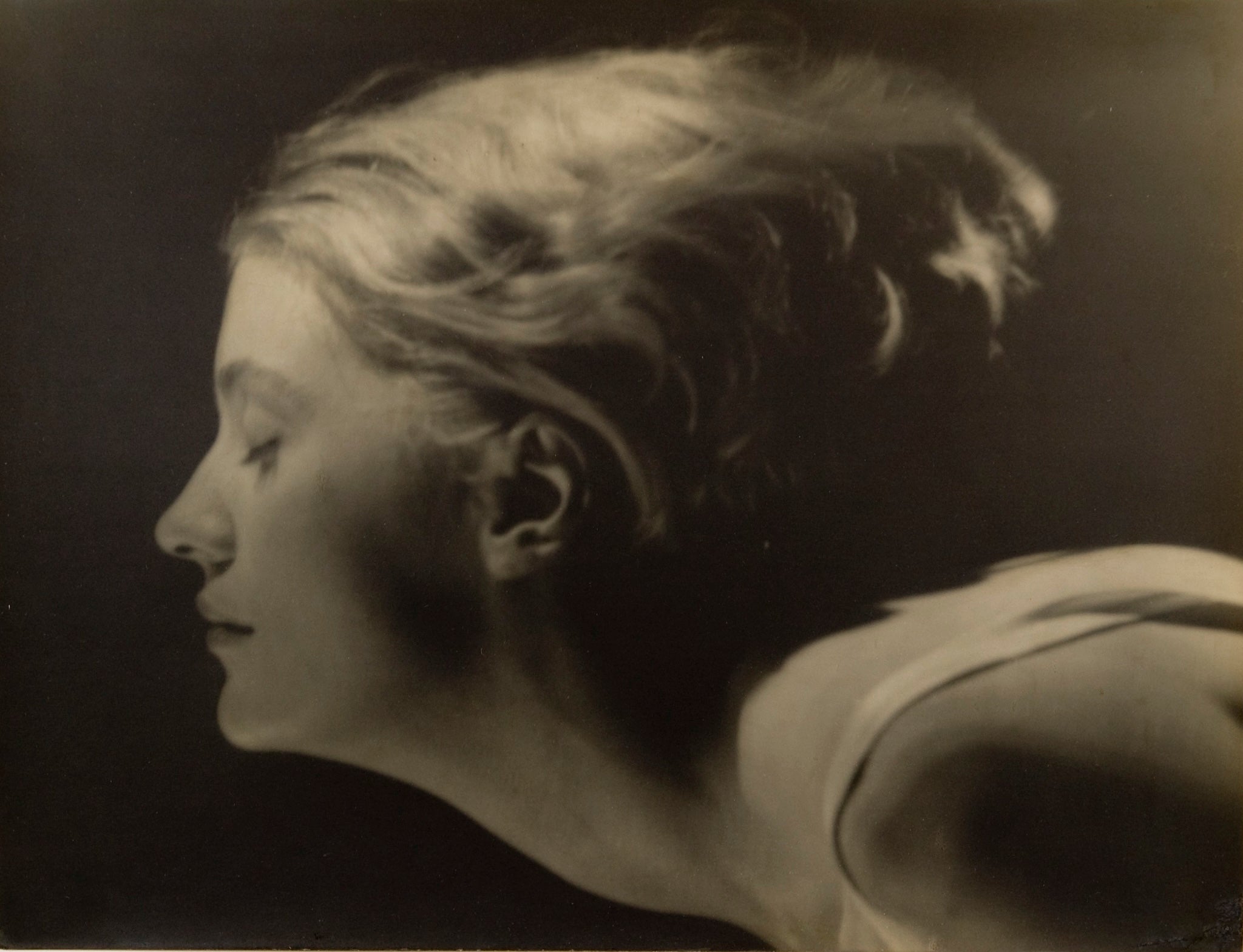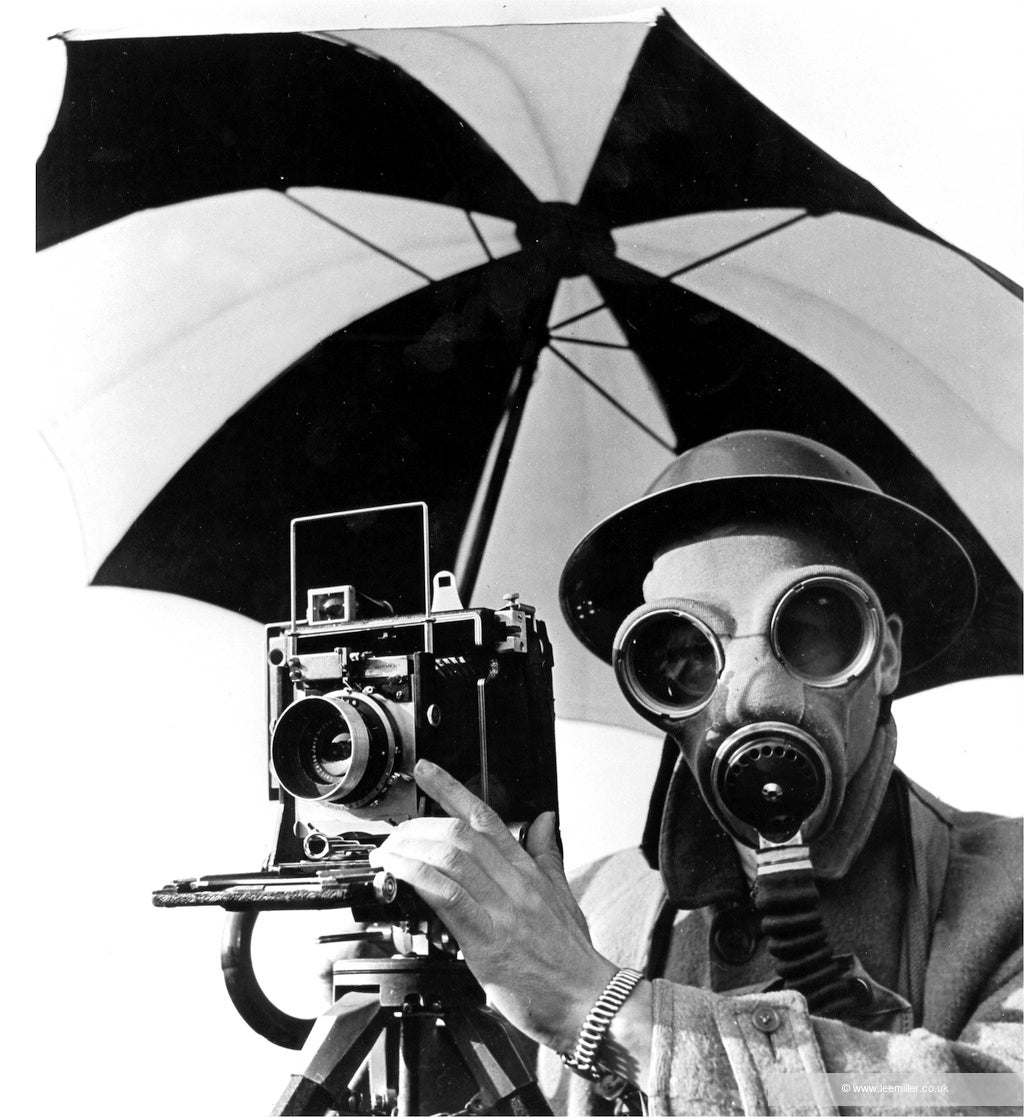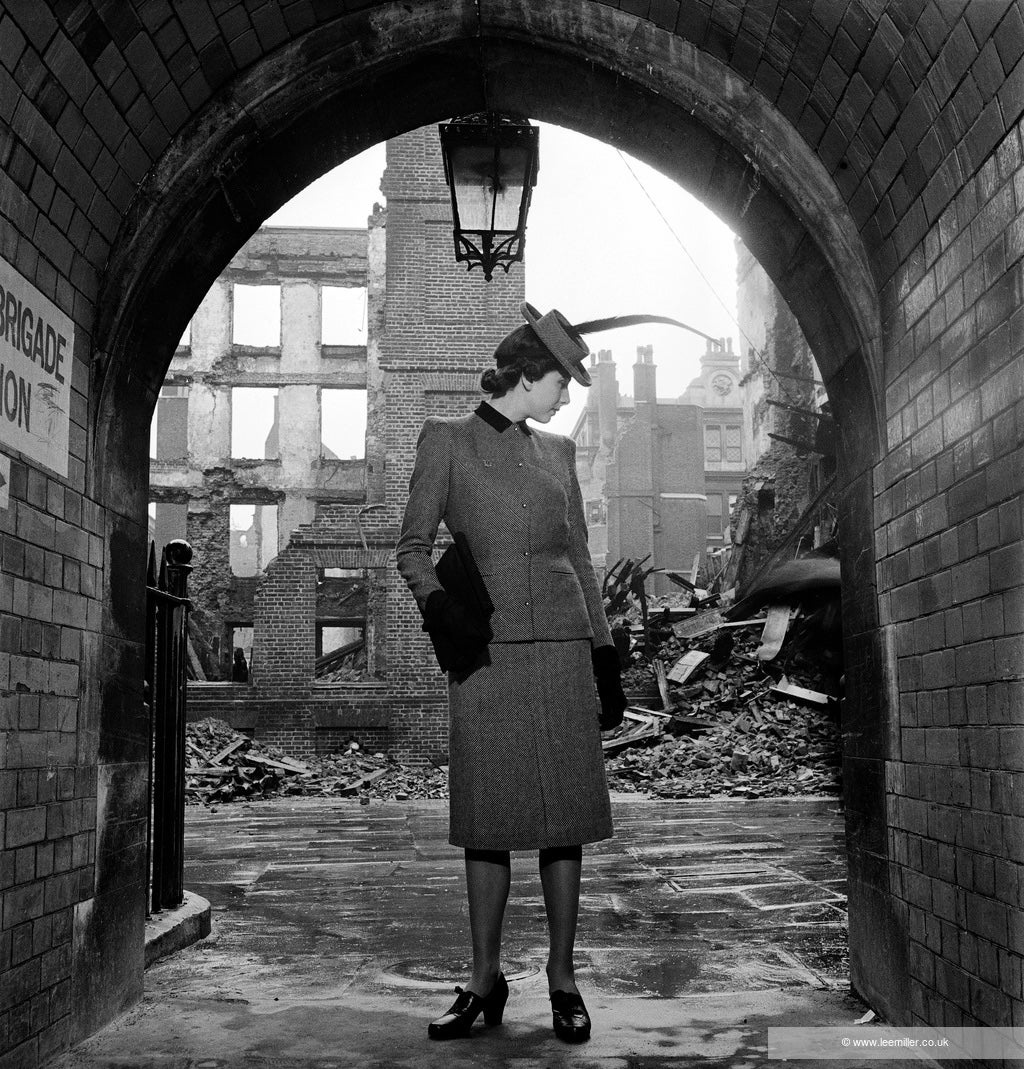Lee Miller’s life reads like some hallucinatory fairytale: the suburban girl from Poughkeepsie, New York, who parachuted into some of the 20th century’s most explosive moments. From Vogue model to Parisian surrealist, to acclaimed war photographer present at the liberation of Dachau and Buchenwald, Miller ended her life as the chatelaine of an English country house; albeit one of the quirkiest kind – Picasso was a house guest.
“She seemed to know everyone, everywhere,” says Hilary Floe, curator of a major Miller retrospective, her largest to date, opening at Tate Britain on 2 October. Indeed, the apparent glamour of the photographer’s life, combined with her personal beauty, might make Miller’s story feel more suited to this paper’s style pages than its arts – yet there’s a distinctly dark undertow to Miller’s life, hinted at in a 1960s newspaper interview.
“It was a matter of getting out on a damn limb and sawing it off behind you,” she had said. That one brief sentence establishes several key Miller characteristics: a feisty readiness to take on life’s challenges, an acknowledgement that some difficulties may have been of her own making, and a hint at her capacity for myth-making, which becomes increasingly evident as you read further into her story.
As we celebrate World Photography Day today, the rediscovery of neglected women Surrealists has become a growth industry in recent years: the formerly little-regarded English painter Leonora Carrington is now as highly rated as her sometime partner, the once titanic Max Ernst. Miller might seem hardly in need of rediscovering, having been the subject of innumerable major exhibitions since her death in 1977, not to mention a musical, and most recently a lavish biopic starring Kate Winslet. Yet even to viewers relatively well-versed in Surrealism, her name is likely to evoke one of many luminous portraits of Miller by her lover, mentor and collaborator Man Ray, rather than one of her own works.
Under the dream-like cast of Ray’s signature solarisation technique – in which over-exposure creates a simultaneous appearance of positive and negative – Miller appears perhaps the ultimate Surrealist siren. The Tate’s exhibition, as Floe makes clear, aims to rescue Miller from the role of muse, while exploring the collaborative nature of these iconic images. “She’s been seen from so many perspectives, such as the pretty girl who inspired great men – and much as it’s discredited you still hear it,” says Floe. “There’s a sensationalised, biographical approach focused on the couple’s mutual passion. Certainly their romantic and erotic connection is very evident in these images – I think they both took lovers during this period, which doesn’t mean anything, because they were Surrealists – but a focus on the story tends to sideline her art.”
A more recent approach, then, projects Miller’s work as a proto-feminist riposte to Ray’s quintessential male gaze. But that, Floe says, “undersells the depth of their creative connection” and fails to account for Miller’s own recollections that she and Man Ray “were like one person when we were working” – that it was impossible, even unnecessary for them to know exactly who had done what in each work. “That challenges our ideas of creative inspiration,” says Floe, “our need to always attribute a work to a single person.”
There is evidence, explored in the show’s catalogue, that it was Miller rather than Ray who was responsible for the discovery of solarisation – in one telling, she was distracted by a mouse running over her foot at the moment the paper should have been withdrawn from the developer.
Floe, though, wants to shift the focus beyond the “undoubtedly extraordinary images” Miller produced alongside Ray, towards her “long and rich body of independent work”. While there have been numerous previous shows on Miller’s roles as fashion and war photographer, historical figure and Surrealist icon, the Tate’s will be the first major exhibition to frame all these activities as aspects of Miller’s own art.
Born Elizabeth Miller in 1907, the daughter of an engineer and a nurse, her trajectory was marked from the outset by trouble and extraordinary happenstance. She contracted gonorrhoea at the age of seven, following a rape by a family friend, and was discovered aged 19, by Vogue founder Conde Nast when he saved her from stepping in front of a car in a busy Manhattan street. In typical Miller fashion, this encounter exists in many versions, but in all of them it leads to a glittering modelling career, which she interrupted in 1929 to head to Paris with the idea of enlisting as Man Ray’s pupil.

After curtly informing her that he “didn’t take students”, Ray (born Emmanuel Radnitsky in Philadelphia 1890), proceeded to fall head over heels in love with Miller, and she with him. Far from being some starry-eyed dilettante, Miller had already taken courses in avant-garde theatre design, interpretive dance, theatrical design and painting, all of which fed into her “extraordinary ability to perform for the camera”, as Floe puts it, “her skill in co-creating Ray’s images of her, and projecting her force into them”.
For all the change and transformation it brought on, this period lasted only three years. “Miller seems to have packed nine simultaneous lives into that brief time,” Floe says. “She continued to model at a very high level, starred in Cocteau’s film The Blood of a Poet, participated in avant-garde photography exhibitions all over Europe, while also working as a medical photographer.”
That last role may account for Miller’s most disturbing work, Untitled/Severed Breast from Radical Mastectomy (1930), in which a real-life female breast is served up on a plate, looking unnervingly like some earthy French culinary delicacy. This American arriviste in Surrealist Paris had managed to produce one of the movement’s most challenging images without appearing to try. Yet according to Floe, the image was never exhibited in her lifetime, and she never talked about how it came into being: “I think even for the Surrealists it was probably too much.”
Another startling work, which the exhibition reattributes to both Miller and Ray, was the source of the only known creative rancour between the pair. When Miller cropped a portrait of Ray’s that focused on the long S-bend of her neck, so that only the neck was showing, he drew a red line across Miller’s image signing it as his own work.
I think even for the Surrealists it was probably too much
Hilary Floe on Miller’s most disturbing work featuring real-life female breast served up on a plate
Portraits of one another, each with their head in the same bell jar, are the nearest the pair came to jointly signed works. The queasily disembodied quality of these images is underlined by their title “Hommage a D.A.F de Sade” (1929) – yes, the inventor of sadism – invoking two typically unwholesome Surrealist preoccupations, the fragmented body and the severed head.
For all the apparent openness of their relationship, Ray fell into a fury of jealousy when Miller left him in 1932. His enraged letters are perhaps the only documentary evidence of their feelings for each other; her responses have long since been lost. On leaving Ray, Miller returned to New York to set up her own photographic studio, before decamping to Cairo with her first husband, the wealthy Egyptian businessman Aziz Eloui Bey in 1934. Then she was off to London in 1939 to be with her lover the English Surrealist Roland Penrose, who she eventually married in 1947.
Along the way her finger seemed to barely leave the camera shutter, from modernist experimentation in the Egyptian desert, to more-or-less straight reportage during the Second World War. As official war correspondent for Conde Nast Publications, she followed US forces during the liberation of Europe with a personal mission to “document war as historical evidence”.

Following a traumatic visit to the newly liberated Dachau concentration camp, Miller took a bath in Hitler’s private apartment in nearby Munich, on the very day the Fuhrer died by suicide in his Berlin bunker. The story might seem too good to be true if Life magazine’s David E Scherman hadn’t captured the moment in a much-reproduced photograph: Miller scrubbing her back with a flannel; her boots at the foot of the bath; a framed photograph of Hitler on the tub’s brim.
Miller’s most harrowing picture is far less well known, showing a young girl with the features of a baroque angel lying on a sofa apparently fast asleep. The Deputy Bürgermeister’s Daughter, Leipzig (1945) looks like an allusion to the Surrealist world of dreams, until we see the accompanying image, in which the girl’s family lie slumped around a room in Leipzig’s town hall having taken cyanide in the face of the American advance. We all know vast numbers of such instances occurred, but to be shown one in such brutal clarity, from the other side of the fence, so to speak, is a reminder of the photographer’s burden: to stare horror in the face and record it.
Miller herself was responsible for fostering the idea that she’d given up photography in response to her experiences in the Second World War. While she continued to take pictures, her output was very much reduced, and she threw her energies instead into cooking. In later years, she became renowned for the legendary house parties she and Penrose held at their home at Farley Farm in East Sussex.

The one thing Miller didn’t seem to be able to do brilliantly was motherhood. Her son Antony, born in 1947, found her a distant and unloving mother. Growing up, he was aware of her descent into alcoholism, and the bouts of clinical depression she hid from the rest of the world, but it was only when he married, that Miller felt able to make a friend of her son, and that he really got to know her. On Miller’s death from pancreatic cancer in 1977, her son discovered 60,000 of his mother’s negatives in the Farley Farm attic. Much of Miller’s current standing is the result of her son’s tireless efforts in promoting her legacy.
While Miller and Ray had parted on bitter terms, they made up some years later and remained friends until Ray’s death in 1976. Miller was always generous in acknowledging her debt to Ray, and treasured the brief moment in time when they were working together as one. As seen in this exhibition, her life and career epitomise the urge to seize a moment of reality experienced by everyone who has ever held a camera – but at levels of transcendent beauty, danger and horror that most of us will never have the opportunity or the need to contemplate.
‘Lee Miller’ is on at Tate Britain from 2 October 2025 to 15 February 2026

